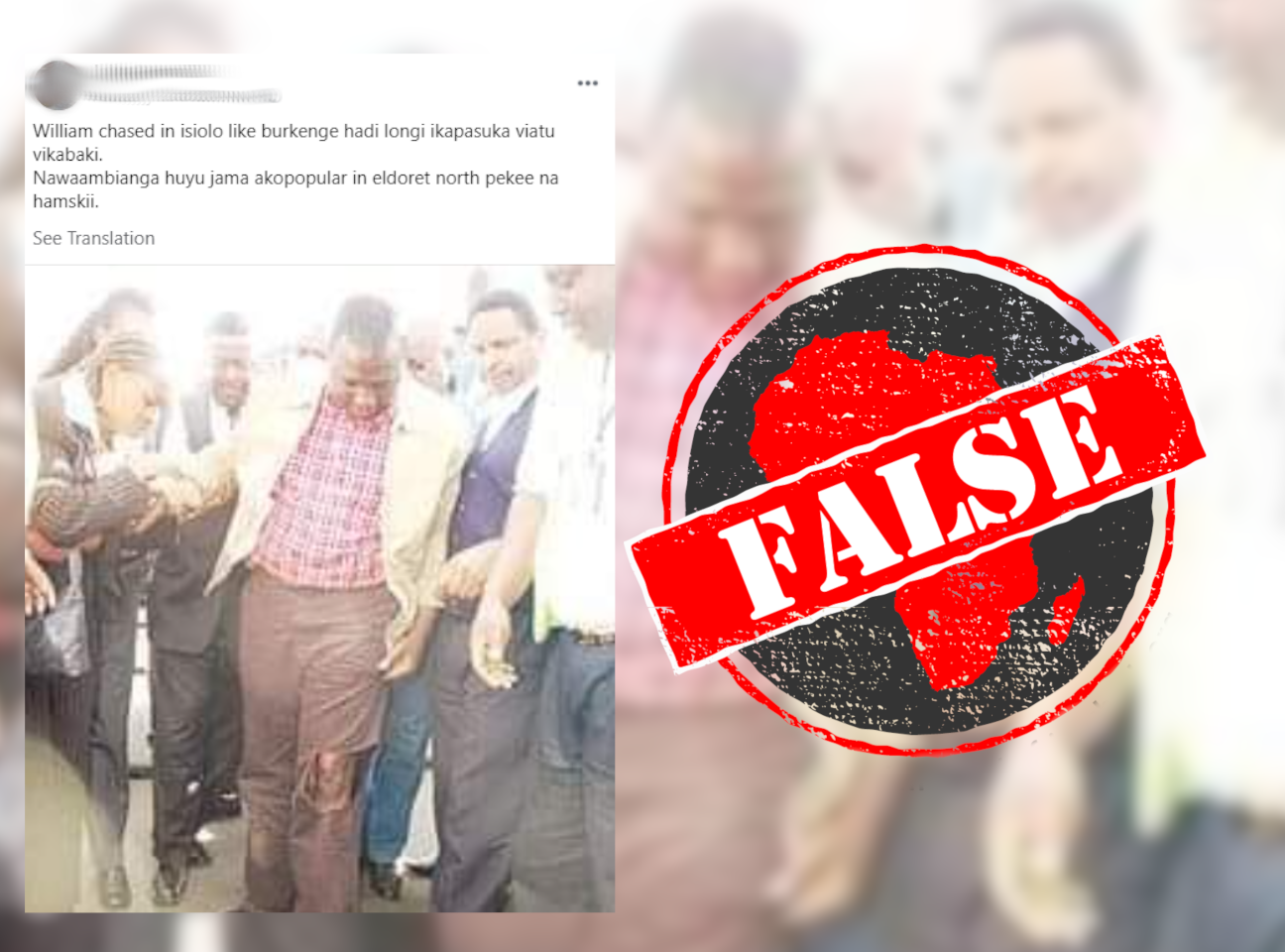In a tour of Isiolo county on 13 February 2021, Kenyan deputy president William Ruto encountered a hostile crowd of young people chanting slogans in favour of president Uhuru Kenyatta’s Building Bridges Initiative, which proposes changes to the constitution.
A few hours later, a photo of Ruto with a torn trouser leg and bloodied knee was posted on Facebook with the claim it was taken just after the incident.
“William chased in isiolo like burkenge hadi longi ikapasuka viatu vikabaki. Nawaambianga huyu jamaa ako popular in Eldoret North pekee na hamskii,” the caption reads.
The Kiswahili loosely translates as: “William chased in Isiolo county like a monitor lizard resulting in torn trousers. His shoes survived. I always tell you this man is only popular in Eldoret North.”
Eldoret is a town northwest of Nairobi.
The photo and caption have been shared in at least two Facebook groups with more than 126,000 members.
But does the photo show Ruto after the encounter in Isiolo? We checked.

Different clothes, more than a decade before
The photo shows Ruto in a white jacket, red checked shirt and brown trousers. But on his tour of Isiolo he was wearing a casual shirt, red trousers and a cap.
The photo has been online for 13 years.
A reverse image search reveals it was first published on 23 September 2007, during campaigns for that year’s general election. It appears in a report that Ruto had been attacked by young people in the South Mugirango constituency the day before.
It has also been used as evidence for another false claim, debunked by Africa Check.
Republish our content for free
For publishers: what to do if your post is rated false
A fact-checker has rated your Facebook or Instagram post as “false”, “altered”, “partly false” or “missing context”. This could have serious consequences. What do you do?
Click on our guide for the steps you should follow.
Publishers guideAfrica Check teams up with Facebook
Africa Check is a partner in Meta's third-party fact-checking programme to help stop the spread of false information on social media.
The content we rate as “false” will be downgraded on Facebook and Instagram. This means fewer people will see it.
You can also help identify false information on Facebook. This guide explains how.


Add new comment